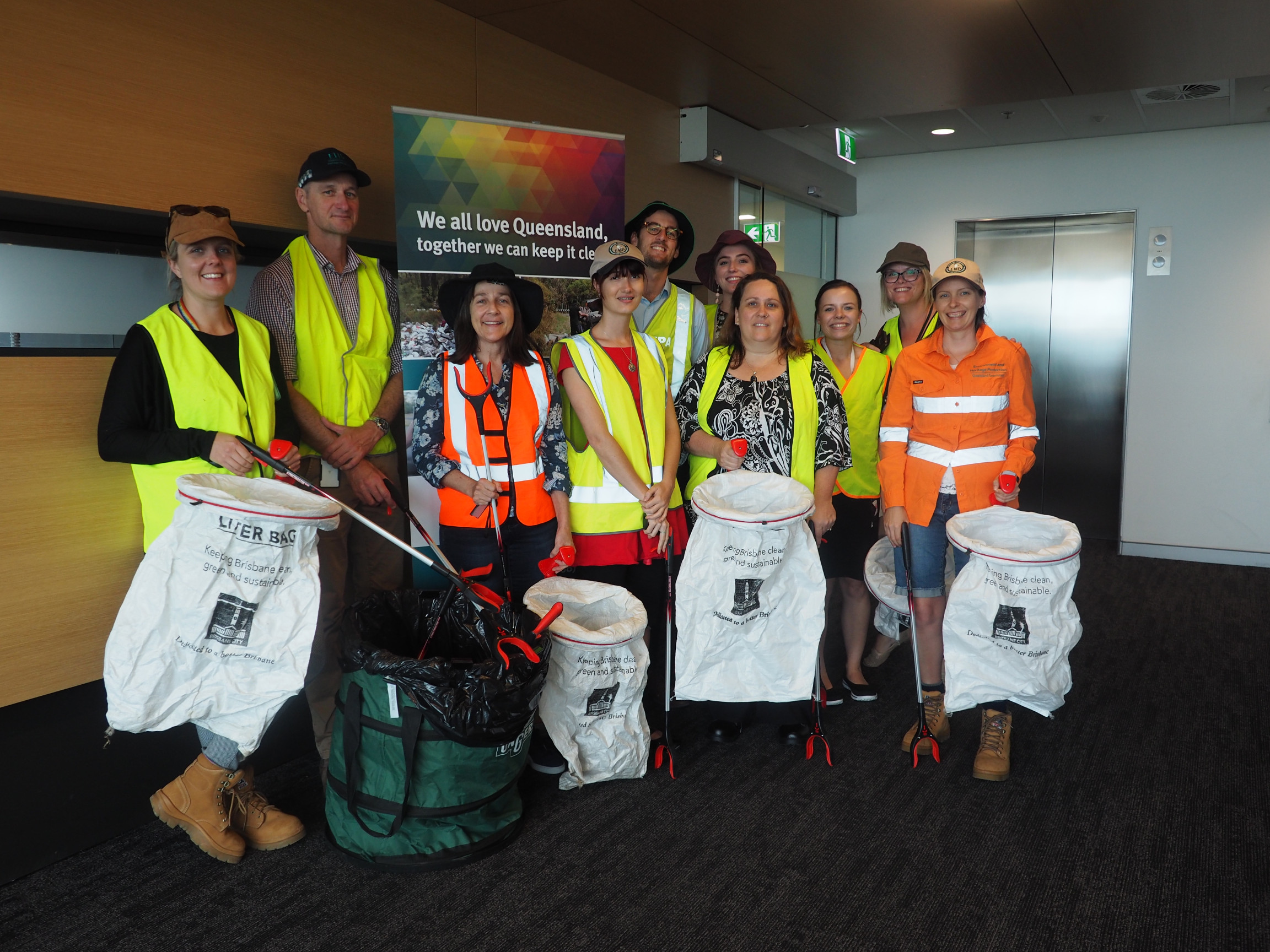|
|
Physical clean-up of waste pollutionThe importance of physically removing waste pollution from natural areas and recreation sites is crucial for the environment, society and the economy. For example, studies show that lower levels of beach cleanliness impact tourism revenue with people reluctant to visit beaches with higher amounts of waste pollution[1][2]. Coordinated volunteer clean-up events have been undertaken for decades and are an effective method of removing waste from the environment. Quick facts
Some American beaches are using supermarket shopping baskets placed on the edge of the beach to encourage beachgoers to collect rubbish. Although this is a good intention, baskets made from true biodegradable products or woven leaves would be a better alternative as they wouldn’t shed plastic. Community clean-up campaignsCampaigns, including Clean Up Australia Day, the 104 or more litter initiative and Take 3 For The Sea, encourage the general public to pick up a small number of waste items from streets, bushland and beaches. These campaigns encourage small actions that contribute to the larger goal of reducing waste in the environment. They also create role models that influence the community’s perception of picking up waste, encouraging it as the social norm. Many local councils, rangers and community groups run these events, including:
Litter clean-up kitsThe kits include gloves, litter pickers and lightweight hand-held bins. They are available from many councils or by registering a clean-up event with Clean Up Australia. Cleaning StationsOn-site cabinets that contain gloves, bags and litter pickers are an excellent resource for community members who want to help. The cleaning material is usually provided and maintained by councils or other land managers. Community members usually register to access a station. Manual waste collection – waterwaysNatural resource management groups or waterway cleaning organisations can be contracted to help remove large waste items from rivers, creeks, lakes, estuaries and off-shore islands. Special equipment may be required. Manual waste collection – landA landowner or land manager is responsible for removing littered and illegally dumped items from their land. Natural resource management groups or waste removal organisations can be contracted to assist. Note that contractors must be appropriately licenced to remove and transport regulated waste. Automatic underground waste collectionA new high-tech waste management system has been installed in the Sunshine Coast, Queensland. Waste is transported from commercial buildings and apartments, at up to 70 kilometres per hour, through a 6.5km system of underground vacuum pipes located beneath the ground. Located in the town of Maroochydore, Queensland, the system ensures that “people will never have to walk past rows of wheelie bins or be woken early by noisy garbage trucks."
Litter vacuum systemsDedicated vacuums can be used to remove smaller waste items, such as cigarette butts, beverage containers and polystyrene from streets, gutters, parks and waterways. Vacuum systems can be mounted to trailers, vessels, vehicles and backpacks or used as standalone vacuums. Vacuums are typically used by local councils and street maintenance crews to remove waste from central business districts. Tractor-powered siftersTractor-towed sifting beach cleaners remove material from fine, dry sand and can be a viable cleaning option depending on the beach conditions. However, the speed of the tractor is limited, as sifting units need to lift the sand onto the belt and sift it through. This energy-intensive process takes more time than raking methods. Similarly, if the sand is wet or damp, it must travel at relatively low speeds to thoroughly clean without removing too much sand. That being said, they excel at removing light, tiny objects from the sand, like dried oil remnants, and are a powerful tool for such applications. Street sweepersRoad and carpark street sweepers use suction, high pressure water and spinning brush heads to clean waste, dirt and debris from roads, gutters, carparks and footpaths. This equipment and street sweeping services can be useful for governments, commercial or residential developers, industry and manufacturers, shopping centres, universities and schools. References
Last updated: 23 April 2025 This page should be cited as: Department of Environment, Science and Innovation, Queensland (2025) Physical clean-up of waste pollution, WetlandInfo website, accessed 8 May 2025. Available at: https://wetlandinfo.des.qld.gov.au/wetlands/management/pressures/litter-illegal-dumping/management-interventions/com-clean-up.html |

 — Department of the Environment, Tourism, Science and Innovation
— Department of the Environment, Tourism, Science and Innovation


